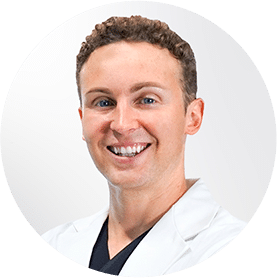Renowned Back Pain Dr Near Me in NJ Explains How the Spine Works
October 14, 2021
The spine plays an essential role in your body. It allows mobility, gives you structure and supports your weight. But perhaps the most important function of the spine is to shield your spinal cord, which runs right through it, connecting the brain with all other parts of your body. Needless to say, your body can’t function without the spinal cord, so the more reasons to keep your spine healthy.
But what exactly is the spine? To understand why you may be feeling a certain type of back or neck pain, you must understand the anatomy of the spine and which part is responsible for the way you perform specific movements.

The vertebrae are the small bones that make up your entire spine. There are 24 of them, which stack on top of each other and form the spinal canal. Vertebrae are separated by small cushions called discs to prevent them from rubbing against one another. Ligaments, tendons, and joints also play important parts in proper spine health.
If you are looking to learn more about the spine, you have come to the right place. A board-certified back pain doctor near me in NJ is here to explain more on the functions of each important part that makes up the spine. Keep reading for a short anatomy lesson!

1. The vertebrae
We have already established that the vertebrae make up the spine and protect the spinal cord. They also support most of the weight you put on your spine. Each vertebra’s body is connected to a bony ring, which forms a hollow tube through which the spinal cord travels when the vertebrae are stacked on top of each other.
The vertebra, just like other bones, has a hard and robust outer layer called cortical bone, while the interior is composed of cancellous bone, which is a soft, spongy kind of bone.
Back experts often examine one spinal section to better understand and explain how the entire spine functions. A spinal segment is made up of two vertebrae connected by ligaments and separated by a soft disc.
Sometimes only one spinal segment is affected by a condition, but there are instances in which discomfort comes from two or more segments.
Each spinal segment is like a finely calibrated component, operating together to allow weight bearing, mobility, and support. And because all spinal segments combine to form a powerful structure known as the spinal column, each of these elements needs to work properly. When one part of the spine deteriorates, it can cause pain and discomfort, signalling you need to see a pain specialist.
2. The intervertebral discs
Between each vertebra, there is a round and flat cushion called an intervertebral disc. These discs are there to absorb shock and prevent vertebrae from creating friction and deteriorating.
The annulus, a robust outer ring of fibers, and the nucleus pulposus, a soft, jelly-like core, make up each disc. The annulus is the disc’s outer covering and its most powerful region, joining one vertebra to the next. It also aids in the preservation of the disc’s nucleus.
The disc’s mushy center acts as the primary shock absorber. Because of its high water content, which acts as a shock absorber, similar to a waterbed mattress, the nucleus is made up of tissue that is extremely wet.
3. The facet joints
The facet joints are knob-like bones that meet between the vertebrae and are responsible for keeping them together.
Between every two vertebrae, there are two facet joints – one on each side. They establish a junction between the two vertebrae by extending and overlapping. You would have almost no flexibility in your spine without the facet joints, and you’d only be able to move in extremely straight and rigid motions.
These facet joints are part of the synovial joint class. A synovial joint, such as one seen in the knee or elbow, is a mechanism that allows two bones to move together. A substance called articular cartilage covers the ends of the bones in a synovial joint. This is a smooth, spongy substance that permits the bones to glide easily against one another.
4. The spinal cord
The spinal cord, which runs through your spinal canal, contains millions of nerve fibers. It runs from your brain to the region between your first and second lumbar vertebra. The spinal cord splits into numerous groups of fibers at the second lumbar vertebra, forming the nerves that travel to the lower body. The nerves run through the spinal canal for a short distance before leaving through the neural foramen.
The dura mater is a protective membrane that surrounds the spinal cord and nerves, forming a waterproof bag that holds spinal fluid.
Because the nerves in each section of the spinal cord are linked to particular parts of your body, spinal cord injury can induce paralysis in very specific places, depending on which spinal nerves are damaged. These nerves connect to your body this way:
- Cervical spine nerves – upper chest and arms
- Thoracic spine contains nerves – chest and belly
- Lumbar spine nerves – legs, intestines, and bladder
These nerves coordinate all of the body’s organs and components and provide muscle control. Electrical signals are also carried back to the brain via nerves, allowing you to experience sensations. When your nerves sense that anything is wrong with your body, they send a signal to your brain. Damage to the nerves might produce pain, tingling, or numbness.
5. The Neural Foramen
The neural foramen is the gap between each pair of vertebrae, through which the nerves exit the spine and start their journey to reach the rest of your body.
Between each pair of vertebrae, there are two neural foramina, each situated on one side of the body. Nerve signals could not flow from the brain to the rest of your body if the foramen were obstructed, and your body would not be able to operate without these nerve impulses.
Now that you know a bit more about the spine and all of its important parts, you will be able to understand more about your symptoms. If pain keeps giving you trouble and prevents you from enjoying everyday life, then it is highly recommended you visit a back pain dr near you in NJ.
At our spine center, trained pain doctors will use state-of-the-art equipment to diagnose your condition and suggest the best-suited minimally invasive treatment based on your unique situation and medical history. We are also available for phone general inquiries to provide interventional pain management advice. You can find a back pain dr near me in NJ at our conveniently-placed pain clinics in Paramus on Route 17, near the Paramus Park Mall, in Clifton, NJ, on Route 46 E, past the Ford dealership, in West Orange, near the Essex Country Club, and in Woodland Park clinic, on McBride Avenue, right next to Woodland Park Dialysis Center.
Book a Consultation
Scheduling a consultation with one of our pain treatment specialists is one of the best ways to determine the proper solution for pain relief.
Meet Our Team of Back Pain Specialists
All of our Pain Doctors in New Jersey are Harvard Trained and Board Certified in Pain Management

Back Pain Doctor Clifton & West Orange NJ
Dr. George Hanna
Dr. Hanna is a Harvard Trained back specialist in New Jersey and New York. He serves as Medical Director of Pain Management.

Back Pain Doctor Clifton & West Orange NJ
Dr. Laura Lombardi
Dr. Lombardi is a Harvard Trained back pain treatment doctor, currently seeing patients in Clifton and West Orange, New Jersey.

Back Pain Doctor Clifton & West Orange NJ
Dr. Shane Volney
Dr. Volney is a Harvard Trained back treatment doctor seeing patients in the NJ areas of Clifton & West Orange, and in NYC.

Back Pain Doctor Clifton & West Orange NJ
Dr. Michael Nguyen
Dr. Nguyen is Harvard Trained and Board Certified in Pain Management. His pain center accepts major medical insurances and Medicare.

Dr. George Hanna

Dr. Laura Lombardi
Dr. Lombardi is a Harvard Trained back pain treatment doctor, currently seeing patients in Clifton and West Orange, and Paramus New Jersey.

Dr. Shane Volney
Dr. Volney is a Harvard Trained back treatment doctor seeing patients in the NJ areas of Clifton & West Orange, and in NYC.

Dr. Michael Nguyen
Dr. Nguyen is Harvard Trained and Board Certified in Pain Management. His pain center accepts major medical insurances and Medicare.
